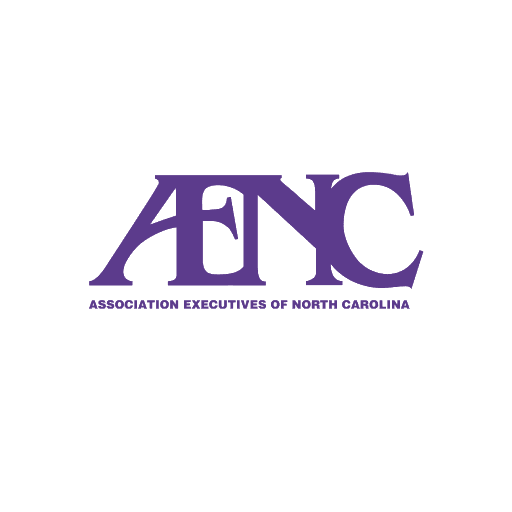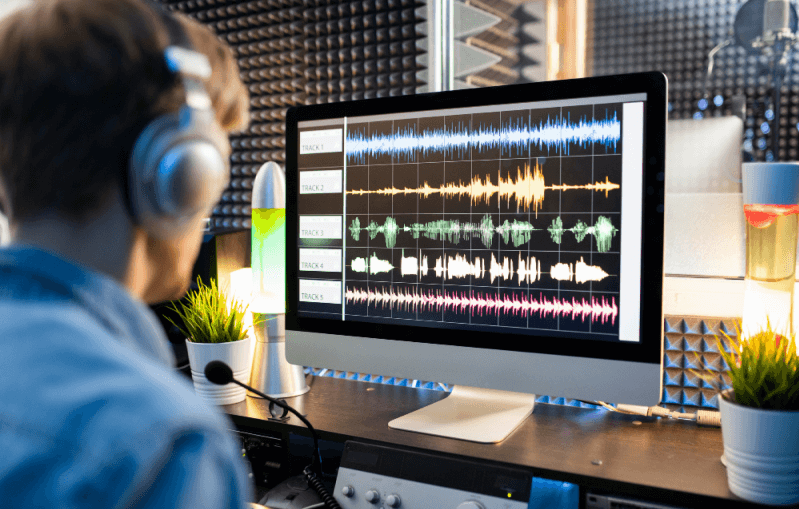Recognizing the Incorporation of Audio Visual Modern technology in Today's Educational Environments
The combination of audio-visual technology in academic settings has actually transformed the training and finding out process. Educators currently have accessibility to tools that deal with numerous finding out designs, enhancing student engagement and partnership. However, the unification of these technologies offers both opportunities and obstacles. Understanding exactly how to properly execute these devices is vital. What methods can educators use to maximize the benefits of audio-visual innovation in their class?
The Evolution of Audio-Visual Innovation in Education
As academic demands evolved over the decades, audio-visual innovation undertook substantial transformations that improved the knowing atmosphere. Tools such as film projectors and slide shows were the primary methods of incorporating aesthetic elements into class. These very early technologies supplied instructors with the capacity to existing details dynamically, yet they were restricted in ease of access and interactivity.
With the development of video clip cassette recorders in the 1970s, classrooms began to incorporate recorded lessons, broadening the extent of educational sources. The intro of individual computer systems in the 1980s more changed this landscape, permitting the production of multimedia discussions and interactive knowing experiences.
The surge of the internet in the 1990s marked a zero hour, making it possible for real-time accessibility to a wide range of audio-visual products. Today, electronic tools such as interactive whiteboards and on-line understanding systems proceed to improve the academic experience, fostering engagement and cooperation amongst learners.
Benefits of Audio-Visual Equipment for Diverse Discovering Styles
Audio-visual tools play a crucial duty in dealing with diverse understanding designs by enhancing aesthetic understanding and enhancing auditory involvement. By integrating images, video clips, and sound, these technologies develop a more comprehensive academic environment. This complex technique permits teachers to deal with the diverse preferences and demands of trainees effectively.
Enhancing Visual Understanding
Engagement in the learning process is substantially improved via using audio-visual tools, satisfying numerous discovering styles. These tools, such as video clips, infographics, and interactive presentations, supply aesthetic stimulations that help understanding and retention. Visual students, in particular, gain from the incorporation of pictures and computer animations, which can simplify complicated principles and enhance understanding. Furthermore, audio-visual sources can illustrate real-world applications, making finding out more appropriate and appealing. By incorporating color, movement, and audio, educators can create a dynamic learning atmosphere that catches trainees' interest and promotes much deeper cognitive links. Ultimately, the critical use of audio-visual innovation not only sustains aesthetic understanding but also enhances the general instructional experience for varied students.
Improving Auditory Engagement
A significant advantage of including audio-visual tools in education is their ability to improve auditory interaction amongst trainees. These tools, which incorporate multimedia discussions, podcasts, and interactive sound elements, accommodate numerous learning designs, specifically profiting acoustic students (audio visual charlotte nc). By integrating noise and narration, educators can create immersive experiences that capture students' attention and reinforce understanding. This involvement is vital, as it cultivates a much deeper understanding of the product and advertises retention. Furthermore, audio-visual tools can assist in collective knowing atmospheres, encouraging pupils to join conversations and share their insights. Ultimately, the incorporation of audio-visual modern technology not just supports auditory engagement yet additionally improves the general educational experience, making finding out more vibrant and efficient for all students
Enhancing Engagement Via Interactive Understanding

Additionally, gamification aspects, such as tests and simulations, can enhance inspiration and retention, making discovering more enjoyable and efficient. These techniques not just stimulate cognitive involvement however likewise satisfy diverse knowing designs, ensuring that all trainees can take part meaningfully. As an outcome, interactive learning atmospheres promote a feeling of area and belonging, ultimately causing boosted scholastic outcomes. Through the combination of audio aesthetic technology, educators can transform typical classrooms right into lively rooms where pupils grow and actively shape their educational journeys.
Connecting Theory and Exercise With Multimedia Resources
Multimedia sources work as an essential link between theoretical concepts and sensible application in educational setups. By boosting involvement, helping with collaborative knowing experiences, and supporting diverse understanding styles, these tools create a more inclusive and vibrant understanding setting - audio visual charlotte nc. This strategy not only cultivates much deeper understanding yet likewise prepares trainees for real-world challenges

Enhancing Involvement With Multimedia
Interaction in educational setups substantially boosts when trainers incorporate multimedia sources into their teaching techniques. Making use of video clips, podcasts, and interactive presentations enhances the discovering experience, enabling students to connect with the product on several degrees. Multimedia resources accommodate different learning designs, providing aesthetic, auditory, and kinesthetic stimulations that can hold trainees' focus a lot more efficiently than traditional lecture techniques. In addition, these resources can streamline complicated concepts, making them a lot more available and remarkable. By integrating multimedia, teachers can develop a dynamic class atmosphere that cultivates inquisitiveness and motivates learners. Inevitably, the critical use of audio-visual modern technology serves to link the gap between academic understanding and sensible application, enriching the academic experience for both teachers and students.
Promoting Collaborative Knowing Experiences
Countless studies suggest that joint learning experiences markedly enhance trainee end results when incorporated with multimedia sources. Multimedia tools assist in communication amongst trainees, enabling them to participate in problem-solving and critical believing jointly. By making use of video conferencing, collaborative platforms, and interactive discussions, instructors develop settings favorable to synergy and shared discovering. These innovations enable trainees to connect their ideas properly and receive immediate feedback, fostering a deeper understanding of the subject matter. Furthermore, multimedia resources can present complicated ideas in more digestible styles, promoting discussion and collaboration. Therefore, the mix of collaborative discovering and audio-visual modern technology not just enhances the academic experience however likewise prepares trainees for real-world team effort dynamics, emphasizing the significance of collaboration and collective knowledge construction.
Sustaining Diverse Understanding Styles
While conventional teaching approaches often accommodate a restricted variety of learning choices, the assimilation of audio-visual technology offers a more inclusive approach to education and learning. By utilizing multimedia resources such as video clips, interactive simulations, and electronic discussions, teachers can address numerous discovering styles, consisting of visual, acoustic, and kinesthetic. This flexibility permits differentiated direction, allowing pupils to involve with content in means that resonate with their private preferences. In addition, audio-visual tools can promote deeper understanding by giving several depictions of complicated ideas. Because of this, pupils who might have a hard time with conventional techniques can find different pathways to success, cultivating a much more fair discovering environment that sustains academic accomplishment for all learners.
Challenges in Implementing Audio-Visual Innovation
Although audio-visual innovation holds wonderful assurance for improving educational experiences, its implementation usually encounters significant challenges. One primary worry is the economic worry connected with acquiring and preserving such tools, which can stress spending plans, particularly in underfunded institutions. Furthermore, insufficient training for teachers can hinder efficient combination, leaving them ill-prepared to use the modern technology totally. Technical concerns, such as software malfunctions and compatibility problems, may additionally interfere with lessons and discourage both educators and pupils. Varying degrees of pupil accessibility to innovation outside the class can develop differences in discovering chances. Lastly, the potential for over-reliance on technology may interfere with essential training approaches, eventually limiting the educational experience. Attending to these challenges calls for an extensive method, consisting of appropriate funding, specialist advancement, and equitable accessibility to resources, to guarantee that audio-visual modern technology can be leveraged successfully in today's educational setups.
Best Practices for Integrating Modern Technology in the Class

Furthermore, promoting an interactive atmosphere via joint devices urges student engagement and participation. Utilizing diverse audio-visual resources deals with different finding out designs, accommodating visual, auditory, and kinesthetic learners. Routinely examining the influence of modern technology on student knowing helps teachers fine-tune their methods and adapt to altering requirements. Lastly, including trainees in the choice of innovation advertises possession and inspiration. By sticking to these ideal methods, teachers can produce a dynamic classroom atmosphere that effectively integrates modern technology and improves the academic experience for all trainees.
The Future of Audio-Visual Technology in Education And Learning
As class progressively embrace technology, the landscape of audio-visual devices in education proceeds to evolve (audio visual charlotte nc). Future developments are expected to concentrate on greater interactivity and personalization, allowing instructors to customize discovering experiences to individual pupil needs. Developments such as enhanced reality (AR) and digital reality (VIRTUAL REALITY) will likely give immersive discovering environments, boosting student involvement and understanding
Artificial knowledge (AI) is positioned to play a substantial function in audio-visual modern technology by providing real-time comments and flexible knowing paths. This assimilation may aid teachers identify and attend to pupil challenges better. Cloud-based platforms will promote simpler accessibility to resources and cooperation amongst students and instructors, despite location.
In addition to these technological advances, expert advancement for instructors will be important, ensuring they are furnished to make use of these tools efficiently. Generally, the future of audio-visual modern technology in education and learning assures to create more dynamic, inclusive, and impactful knowing experiences.
Regularly Asked Inquiries
Just How Can Educators Pick the Right Audio-Visual Devices for Their Class?
Picking appropriate audio-visual tools requires teachers to assess their educational goals, consider pupil demands, review readily available modern technology, and look for referrals from peers or specialists, making certain devices successfully boost learning and interaction within their particular classroom environment.
What Budget Considerations Are There for Implementing Audio-Visual Technology?
Budget considerations for carrying out audio-visual modern technology consist of preliminary purchase costs, upkeep costs, training for personnel, and prospective software application licensing fees. Furthermore, lasting financial investment in updates and replacements should additionally be factored into financial preparation.
Exist Particular Training Resources for Teachers on Audio-Visual Devices?
Numerous establishments use training sources for teachers on audio-visual tools, including on-line training courses, workshops, and training overviews. These resources intend to improve educators' abilities and self-confidence in properly integrating technology right into their teaching techniques.
How Do We Gauge the Effectiveness of Audio-Visual Modern Technology in Knowing?
Gauging the performance of audio-visual modern technology in discovering entails assessing pupil engagement, understanding, retention rates, and general academic efficiency. Studies, assessments, and empirical studies can offer important understandings into its impact on educational end results.
What Prevail False Impressions Regarding Audio-Visual Technology in Education And Learning?
Common mistaken beliefs about audio-visual modern technology in education consist of the idea that it ensures involvement and learning end results, as well as the assumption that all pupils benefit similarly, overlooking individual understanding preferences and requirements.